15
RITUAL MAGIC
Esoteric teachings and ritual magic have been present throughout much of Mubyōshi Ryū’s teachings, displaying the time frame in which the skills were born. Previously, any magical skills were teachings within another section, such as the magical teachings attributed to or complementary with shinobi skills. The following is an overview of the magic to be found in Mubyōshi Ryū, predominantly inserted into the school from the traditions of Bishamonden and the sword school Shinjin Ryū.
THE ART OF KUJI
Kuji is a famous ritual and a misunderstood art. The reason for this is that it is extremely old, predating the samurai, and is found in various forms and is performed for various reasons. Many sources have differing teachings, causing confusion as to what kuji actually is and why it was performed.
Kuji should be considered a nine-word ritual prayer for self-protection, divided into two basic forms. First, in fixed two-handed postures called mudra, where each word is represented by a single hand position. In this version, the samurai would make each hand posture as he spoke the correct spell. Second, a grid network is constructed of nine lines, each representing a single word of the prayer, with a tenth word written over the grid of nine lines.
A samurai would use these protection rituals when he felt in danger. He might simply perform all nine hand postures with their accompanying mantras as a form of spell, or he might make a grid in the air or on paper, where he would write down a tenth word in the center of the grid, depending on which situation he faced, as explained below.
The following two kuji scrolls were written in the nineteenth century by a student of Mubyōshi Ryū, but it is not certain which version the founder of the school used.
The Principle of Kuji (九字之大事, Kuji no Daiji)
1. For Rin (臨), use the Daiitokubō-in mudra (大威徳棒印).
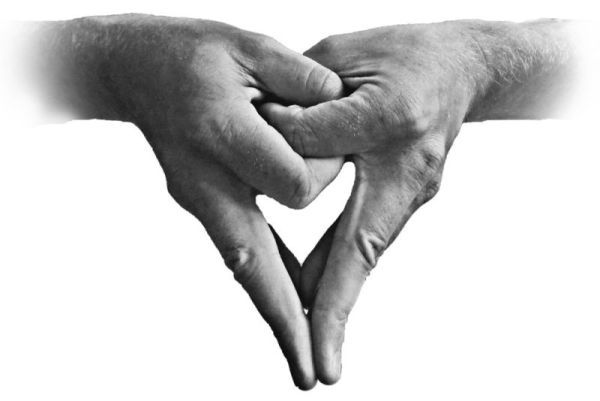
Figure 15.1.
Daiitokubō mudra
2. For Pyō (兵), use the Daikongōrin-in mudra (大金剛輪印).
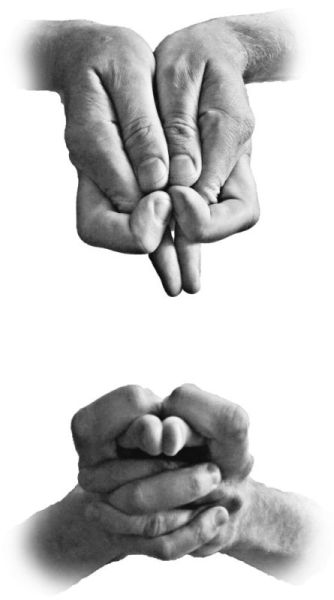
Figure 15.2.
Daikongōrin-in mudra
3. For Tō (闘), use the Gejishi-in mudra (外獅子印).
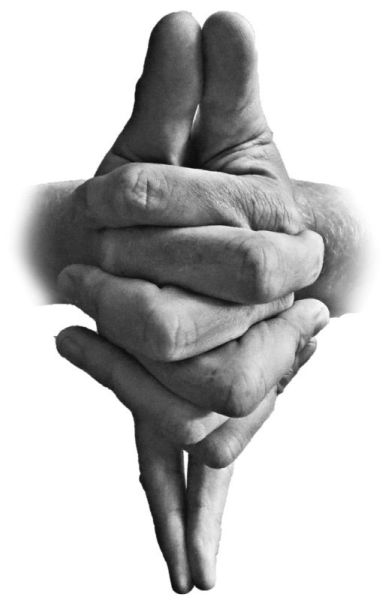
Figure 15.3.
Gejishi-in mudra
4. For Sha (者), use the Naijishi-in mudra (内獅子印).
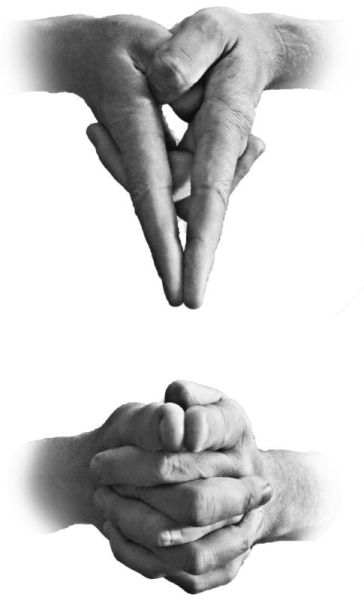
Figure 15.4.
Naijishi-in mudra
5. For Kai (皆), use the Gebaku-in mudra (外縛印).
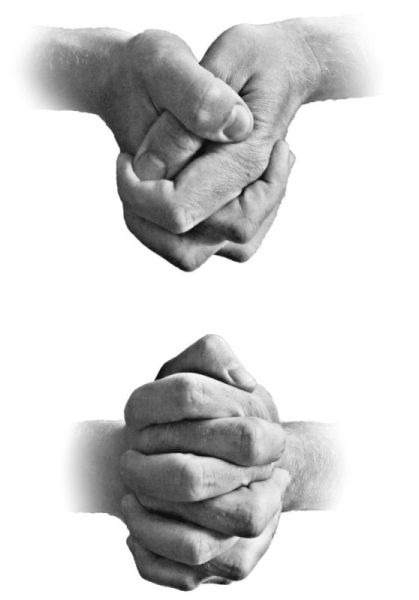
Figure 15.5.
Gebaku-in mudra
6. For Jin (陣), use the Naibaku-in mudra (内縛印).
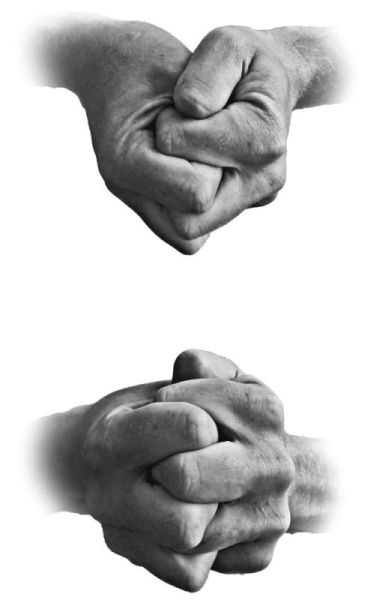
Figure 15.6.
Naibaku-in mudra
7. For Retsu (烈), use the Chiken-in mudra (智拳印).
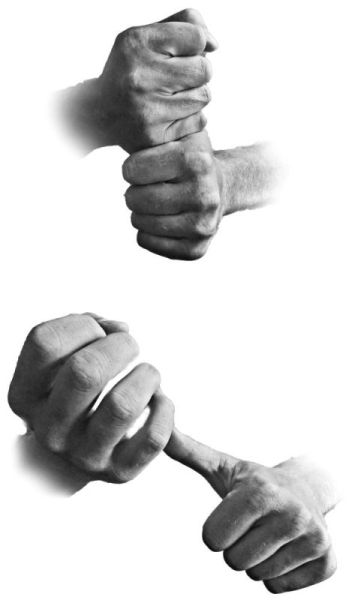
Figure 15.7.
Chiken-in mudra
8. For Zai (在), use the Nichirin-in mudra (日輪印).
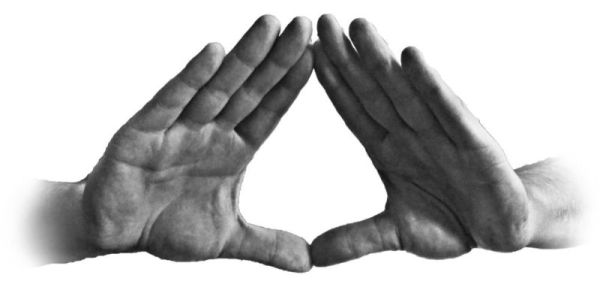
Figure 15.8.
Nichirin-in mudra
9. For Zen (前), use the Hōbyō-in mudra (宝瓶印).
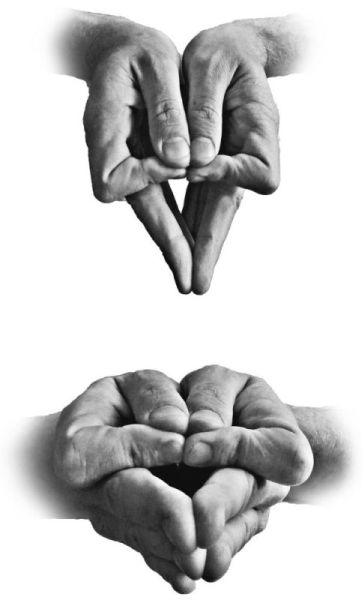
Figure 15.9.
Hōbyō-in mudra

Figure 15.10.
[The Ishida Tarō collection states the following:]
Go through this ritual three times.
Then clap three times [the first two claps are silent, and the third clap is with sound].
[The Morita Kohei collection gives the following date.] The fourth month of Ansei 6 [1859] (安政六年四月)
From Yoshitomo (義知)
To Mr. Morita Kohei (森田小兵衛殿)
The Soldier’s Way of Jūji (兵法十字法, Heihō Jūji Hō)
[In this system, you create the nine-line grid and then, depending on your situation, write the correct character in the center.]

Figure 15.11. The kuji nine-line grid. The dot represents the place where one of the characters listed below should be written.
1. Use ten (heaven) before you meet high ranking people (高位對面之時).
龍
2. Use ryū (dragon) when you cross the sea or river by boat or bridge (海河舟橋渡時).
虎
3. Use ko (tiger) when you go through a large field or deep mountains (廣野深山行時).
王
4. Use ō (king) when you go to battle or meet a thief (合戦盗賊向時).
命
5. Use mei (life) when you eat without protection (無心計飯食時).
勝
6. Use shō (victory) when you quarrel or have a confrontation (問答對決諍時).
鬼
7. Use ki (demon) when you fight illness or go to an evil place (病人向又魔所行時).
8. Use sui (water) when many people gather (大衆交時).
大
9. Use dai (large) when you are happy or something positive has happened (萬喜善事之時).
行
10. Use gyō (to go) when you move to war or depart a place (出陣出行之時).
Write the correct character where the dot is on the kuji grid, and you will avoid and escape various difficulties or danger. Now I give you this. Live deeply and believe in your true mind. Do not show or give this to anyone.
[The Ishida Tarō collection adds the following instruction]:
Symbolically wash your hands without water (karachōzu, から手水)
Wash your hands without water
Perform the sacred cuts and hand postures
And your body will be purified as a sky without clouds is clear
から手水 渇してかけて きりむすひ 身尓ハけがれぬ浮雲もなし
Repeat this three times.
The fourth month Ansei 6 [1859] (安政六年四月)
From Yoshitomo (義知)
To Mr. Morita Kohei (森田小兵衛殿)
THE SCROLL OF THE STAR HAGUN (破軍星之巻, HAGUN SHŌ NO MAKI)
Antony Cummins says: This scroll is a collection of astrological secrets that are based on an understanding of the heavenly bodies, and in particular, the dipper asterism in the constellation Ursa Major. They are at the start difficult to digest, but with perseverance, their meaning becomes clear. They are also an invaluable look at the spiritual and religious side of the samurai, helping us understand their beliefs and magic systems.
The Secrets of Military Astrology (軍敗秘傳, Gunbai Hiden)
CONTENTS
Part 1. The Principle of Hagun (破軍之大事)
Part 2. Understanding the Position of Hagun (破軍在所之事)
Part 3. The Art of Knowing the Auspicious and Inauspicious When Going to Battle—Oral Tradition (軍ニ出知生死事 口傳)
Part 4. The Seven Mantras of Ursa Major (七曜之真言之事)
Part 5. Extracts from Sangoku Sōden, a Book of Divination, the Twenty-Eight Mansions (三國相傳抜書之事 二十八宿)
PART 1. THE PRINCIPLE OF HAGUN (破軍之大事, HAGUN NO DAIJI)
Antony Cummins says: In the constellation Ursa Major, this is the dipper asterism in the form of a dragon. The planet Venus is represented here by the word kanawa hoshi. The dipper asterism is an important factor in samurai warfare.
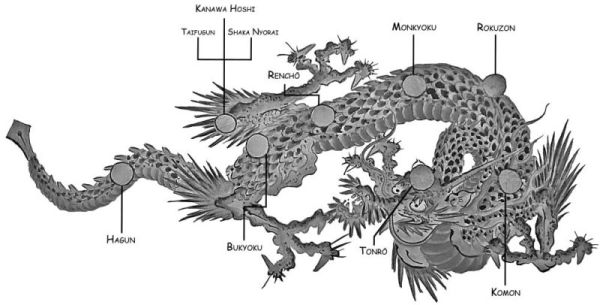
Figure 15.12. The image of the Ursa Major dipper asterism in the form of a dragon. The star Hagun is known as Alkaid in the West.1
PART 2. UNDERSTANDING THE POSITION OF HAGUN (破軍在處之事, HAGUN ARU TOKORO NO KOTO)
Antony Cummins says: A samurai army had to know where the star Hagun was. It represents defeat and can be an ill omen if it is in the wrong position in relation to the army. Therefore, knowing its position was important. The following list describes where the star will be. The Hour of the Dog is 7 p.m. to 9 p.m.
In the first month, [Hagun] will be in the direction of the Tiger at the Hour of the Dog (正月 戌之時 在寅之方ニ).
In the second month, [Hagun] will be in the direction of the Hare at the Hour of the Dog (二月 戌之時 在卯之方ニ).
In the third month, [Hagun] will be in the direction of the Dragon at the Hour of the Dog (三月 戌之時 在辰之方ニ).
In the fourth month, [Hagun] will be in the direction of the Snake at the Hour of the Dog (四月 戌之時 在巳之方ニ).
In the fifth month, [Hagun] will be in the direction of the Horse at the Hour of the Dog (五月 戌之時 在午之方ニ).
In the sixth month, [Hagun] will be in the direction of the Ram at the Hour of the Dog (六月 戌之時 在未之方ニ).
In the seventh month, [Hagun] will be in the direction of the Monkey at the Hour of the Dog (七月 戌之時 在申之方ニ).
In the eighth month, [Hagun] will be in the direction of the Cockerel at the Hour of the Dog (八月 戌之時 在酉之方ニ).
In the ninth month, [Hagun] will be in the direction of the Dog at the Hour of the Dog (九月 戌之時 在戌之方ニ).
In the tenth month, [Hagun] will be in the direction of the Boar at the Hour of the Dog (十月 戌之時 在亥之方ニ).
In the eleventh month, [Hagun] will be in the direction of the Rat at the Hour of the Dog (十一月 戌之時 在子之方ニ).
In the twelfth month, [Hagun] will be in the direction of the Ox at the Hour of the Dog (十二月 戌之時 在丑之方ニ).
The above revolve and come around again as listed above (以上如是次第ニ廻).
PART 3. THE ART OF KNOWING THE AUSPICIOUS AND INAUSPICIOUS WHEN GOING TO BATTLE—ORAL TRADITION (軍ニ出ルニ知生死ヲ事 傳, IKUSA NI DERU NI SEI SHI WO SHIRU KOTO)
Antony Cummins says: The following information is connected to the zodiac and to establishing luck. A person inquiring into his or her horoscope needs to understand how to find the elements known as honmyō (luck) and ganshin (bad luck). This is done by using the person’s birth sign and counting around the zodiac a listed number of spaces. See the chart in figure 14.85. This section also has a selection of magical spells to be chanted.
七星之中ニ本命元辰雲暗ハ軍サニ不可出
本命ト云ハ生レ年ニ當ル星ヲ云也
元辰ト云ハ亥丑卯巳酉未此年ヲ陰ト云
生レタル星ヨリ六ツ目ニ當ル星ヲ元辰ト言也
子寅辰午申戌此年ノ人ヲ陽ト云
此生レ年ノ星ヨリ八ツ目ヲ元辰ト云
此外泰山府軍一字金輪ハ如上謂
亦タ星之本地モ如面テ謂フカ此外有重之秘事
Honmyō (本命) is your birth element [and is very lucky]. It can be found in the constellation Ursa Major. When Ganshin (元辰) [an inauspicious element] is threatening, you should not go to battle. Your honmyō is associated to the zodiac sign you belong to.
If your honmyō is negative [Boar, Ox, Hare, Snake, Cockerel, Ram], then count around the zodiac signs six places [from your birth starting point; this will give you your element of ganshin so that you can work your horoscope].
If your honmyō is positive [Rat, Tiger, Dragon, Horse, Monkey, Dog], then count around the zodiac signs eight places [from your birth starting point; this will give you your element of ganshin so that you can work your horoscope2].
Kuden Senkin Bakuden (口傳 千金莫傳)
An oral tradition that should not be transmitted even for a thousand gold coins
[A magic spell to be chanted:]
heichō, riken, tanin, tahō, gashu, honrai, hokuto ōkami, shichi nan, sokumetsu, fukuju, zōchō, honmyō, ganshin, tōnen, sokusei, taizan fugun, ichiji kinrin, kyū kyū nyoritsu ryō
本命元辰當年即生泰山府軍一字金輪急急如律令)
[A free translation:]
Military harmony, sharp swords that include Buddhist wisdom that renounces evil passions, others’ treasure, of my people, and of myself, know that the god Hokuto Ōkami immediately removes the seven misfortunes and gives long life and happiness. Of honmyō and ganshin, know that which brings luck for this year.
Praise the gods Taizan Fugun, Ichiji Kinrin—so mote it be.
Yakushi Nyorai’s magic spell for removing illness and pain (薬師消咒, yakushi shōshu)
on korokoro sendari matougi sowaka
(唵呼盧呼盧戦駄利摩橙祇莎波訶)
Ichiji Kinrin’s magic spell (一字金輪咒, ichiji kinrin shu)
noumaku sanmanda bodanan boron
(曩莫三曼多没駄南 (in Sanskrit, boron)
Repeat [the above] 100 times.
毎日二百返奉唱者万騎之中雖戦
軍不負手モ不負北計七日生泰山
府軍不可謹軍之時千返間無者
百返急者二十一返門口 (Sanskrit)
如是毎日朝夕ニ手ヲ洗口ヲ澍可奉
唱者也七難即滅ツ七福即生来ト云云
When you chant noumaku sanmanda bodanan boron:
Two hundred times every day, your army will not lose a battle, and there will be no injury in battle, even if there are ten thousand enemy mounted riders.
One thousand chants in a battle cannot be done, so do it one hundred times if you have no time.
Twenty-one times if you are in a hurry when you start something.
Chant it every morning and every evening after washing your hands and rinsing your mouth.
If this is done, the seven misfortunes will disappear immediately, turning to the seven fortunes, and long life and happiness will be secured.
PART 4. THE SEVEN MANTRAS OF URSA MAJOR (七曜之真言, SHICHIYŌ NO SHINGON)
Antony Cummins says: The seven stars of the dipper asterism in Ursa Major each have their own story and god. This section shows a person which god is associated with their star. I was born in the Year of the Horse, which shows me which star I fall under and which spell I should use.
Mantra 1. The star Phecda (貪狼星, tonrō shō)
This star protects a person who was born in the Year of the Rat. (子ノ年ノ人ヲ守, ne no toshi no hito wo mamoru)
This star’s guardian god is Senju Kan’non. (本師 千手観音真言ニ曰)
The god’s mantra is:
on darani sowaka
(唵多羅尼婆嚩訶)
Mantra 2. The star Merak (巨門星, komon shō)
This star protects a person who was born in the year of the Ox and the Boar. (丑亥之年ノ人ヲ守, ushi i no toshi no hito wo mamoru)
This star’s guardian god is Seishi. (本師 勢至 真言ニ曰)
The god’s mantra is:
on kukirudara un sowaka
(唵狗盧多羅吽婆嚩訶)
Mantra 3. The star Dubhe (禄存星, rokuzon shō)
This star protects a person who was born in the Year of the Tiger and the Dog. (寅戌之年ノ人ヲ守, tora inu no toshi no hito wo mamoru)
This star’s guardian god is Amida. (本師 阿弥陀 真言ニ曰)
This god’s mantra is:
on harasarakukin sowaka
(唵波羅旧羅吒禁婆嚩訶)
Mantra 4. The star Megrez (文曲星, monkyoku shō)
This star protects a person who was born in the Year of the Hare and the Cockerel. (卯酉之年之人ヲ守, u tori no toshi no hito wo mamoru)
The star’s guardian god Monju. (本師 文殊 真言ニ曰)
This god’s mantra is:
on iritarataran sowaka
(唵伊哩叱羅多乱婆嚩訶)
Mantra 5. The star Alioth (廉貞星, renchō shō)
This star protects a person who was born in the Year of the Dragon and the Monkey. (辰申之年ノ人ヲ守, tatsu saru no toshi no hito wo mamoru)
This star’s guardian god is Fugen. (本師 普賢 真言ニ曰)
This gods mantra is:
on kotoni un sowaka
(唵戸陀尼吽婆嚩訶)
Mantra 6. The stars Alcor and Mizar (武曲星, bukyoku shō)
This star protects a person who was born in the Year of the Snake and the Ram. (巳未之年ノ人ヲ守, mi hitsuji no toshi no hito wo mamoru)
This star’s guardian god is Miroku. (本師 弥勒 真言ニ曰)
This god’s mantra is:
on kimatouro sowaka
(唵機摩登爐婆嚩訶)
Mantra 7. The star Alkaid (破軍星, hagun shō)
This god protects a person who was born in the Year of the Horse. (午之年ノ人ヲ守, uma no toshi no hito wo mamoru)
This star’s guardian god is Kokūzō. (本師 虚空藏 真言ニ曰)
This god’s mantra is:
on hasatakanta un sowaka
(唵波旧叱漢陀吽婆嚩訶)
PART 5. EXTRACTS FROM SANGOKU SŌDEN, A BOOK OF DIVINATION, THE TWENTY-EIGHT MANSIONS (三國相傳之抜書 二十八宿, SANGOKU SŌDEN NO NUKIGAKI NIJŪ-HASSHUKU)
Antony Cummins says: This section has not been included. It consists of a list of the twenty-eight lunar mansions and their positive and negative connotations for a samurai. The original image is shown (fig. 15.13).
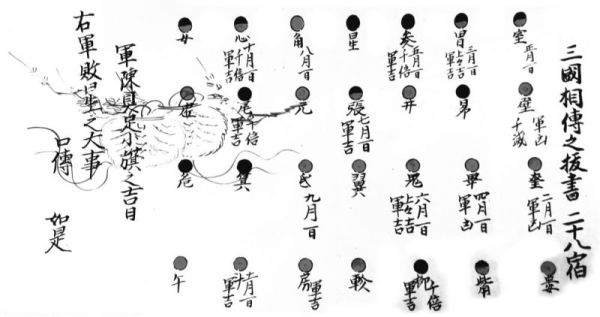
Figure 15.13. The twenty-eight lunar mansions from the Ishida family’s Mubyōshi Ryū scrolls, stored in the Amagasaki Municipal Archives (尼崎市立地域研究史料館蔵石田太郎氏文書)
右此一巻雖秘貴殿多年御所望
感信心深軍敗之内抜出其外秘蜜
之真言并先師傳来之口決兵法之
結要令附属写自今以後雖志輩
有就風流若輩之強郷不可有授
受信心見届以神文盟誓可有
傳受者仍如件
The above is a secret scroll.
As you have been hoping to obtain this for a long time and you are faithful, I have gathered and written extracts from military astrology, secret magic spells, and oral traditions that are military tactics from former masters.
In the future, this should not be transmitted to any immature students, even if they are strong and have studied with ambition [the ways of] our school.
After seeing through his devoutness, this should be transmitted.
Swear this with a written pledge.
Niki Shinjūrō Masanaga
Hagiwara Jūzō Shigetatsu
Tōmi Gen’nai Nobuna
Kitagawa Kin’emon Sadahide
Gotō Shinsuke Suketomo
Mizuno Jūzō
Written in Tenmei 7 [1787] (天明七年)
On the second day in the twelfth month (十二月二日) (花押)
Given to Kitagawa Gorobei (北川五郎兵衛 殿)
THE ART OF SELF-PROTECTION
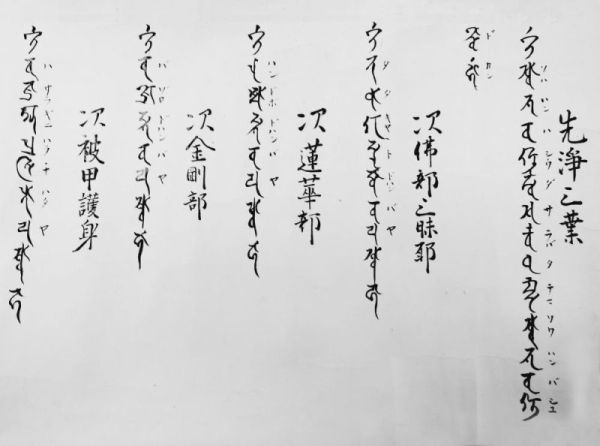
Figure 15.14. The goshinpō ritual from the Ishida family’s Mubyōshi Ryū scrolls, stored in the Amagasaki Municipal Archives (尼崎市立地域研究史料館蔵石田太郎氏文書)
Goshinpō is a short ritual of five components with the objective of surrounding the samurai with spiritual armor. Each of the five stages builds on the purity and spiritual defense of the warrior, until in the end he is given divine protection against his enemies. Each stage consists of a mudra hand position and a mantra spell. For a deeper description of the ritual of goshinpō, see Invisible Armour by Serge Mol.3 Mol’s translations of the mantra are used below, and the images were provided by Gabriel Rossa. Goshinpō may also be known as goshinhō or goshinbō.
Self-Protection (護身法, Goshinpō)
1. 浄三業
Om sowa hanba shiuda saraba tarama sowa hanba shudo kan
Om, all beings are pure by nature, I myself am pure by nature.
Use the Jōsangō mudra (fig. 15.15).
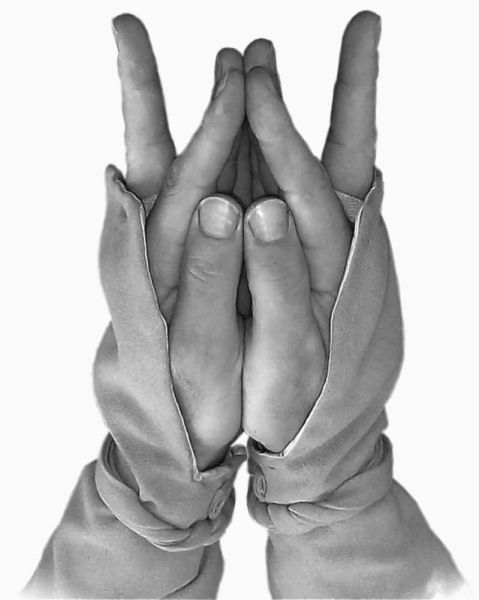
Figure 15.15. Jōsangō mudra
2. 佛部三昧耶
Om tatagyato dohanbaya sowaka
Om, I pay tribute to the victorious that is born, so be it.
Use the Butsubu Sanmaya mudra (fig. 15.16).
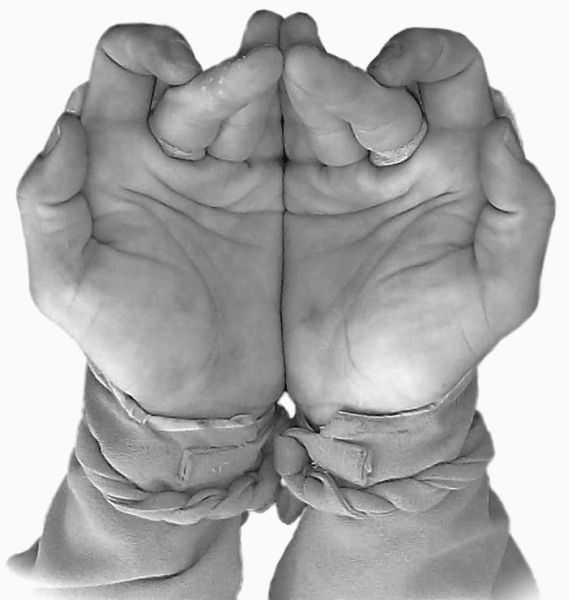
Figure 15.16. Butsubu Sanmaya mudra
3. 蓮華部
Om handobo dohanbaya sowaka
Om, I pay tribute to the lotus that is born, so be it.
Use the Rengebu mudra (fig. 15.17).
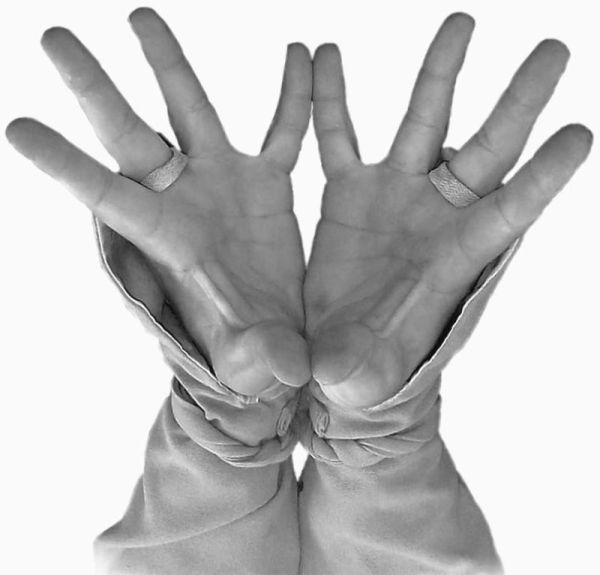
Figure 15.17. Rengebu mudra
Om bazoro dohanbaya sowaka
Om, I pay tribute to the family of all vajras, so be it.
Use the Kongōbu mudra (fig. 15.18).
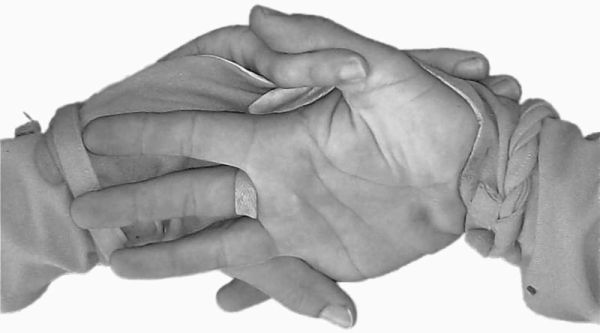
Figure 15.18. Kongōbu mudra
5. 被甲護身
Om bazara gini hara chihataya sowaka
Om, I pay tribute to Agni, goddess of lightning, who lashes out flames, so be it.
Use the Hikō Goshin mudra (fig. 15.19).

Figure 15.19. Hikō Goshin mudra